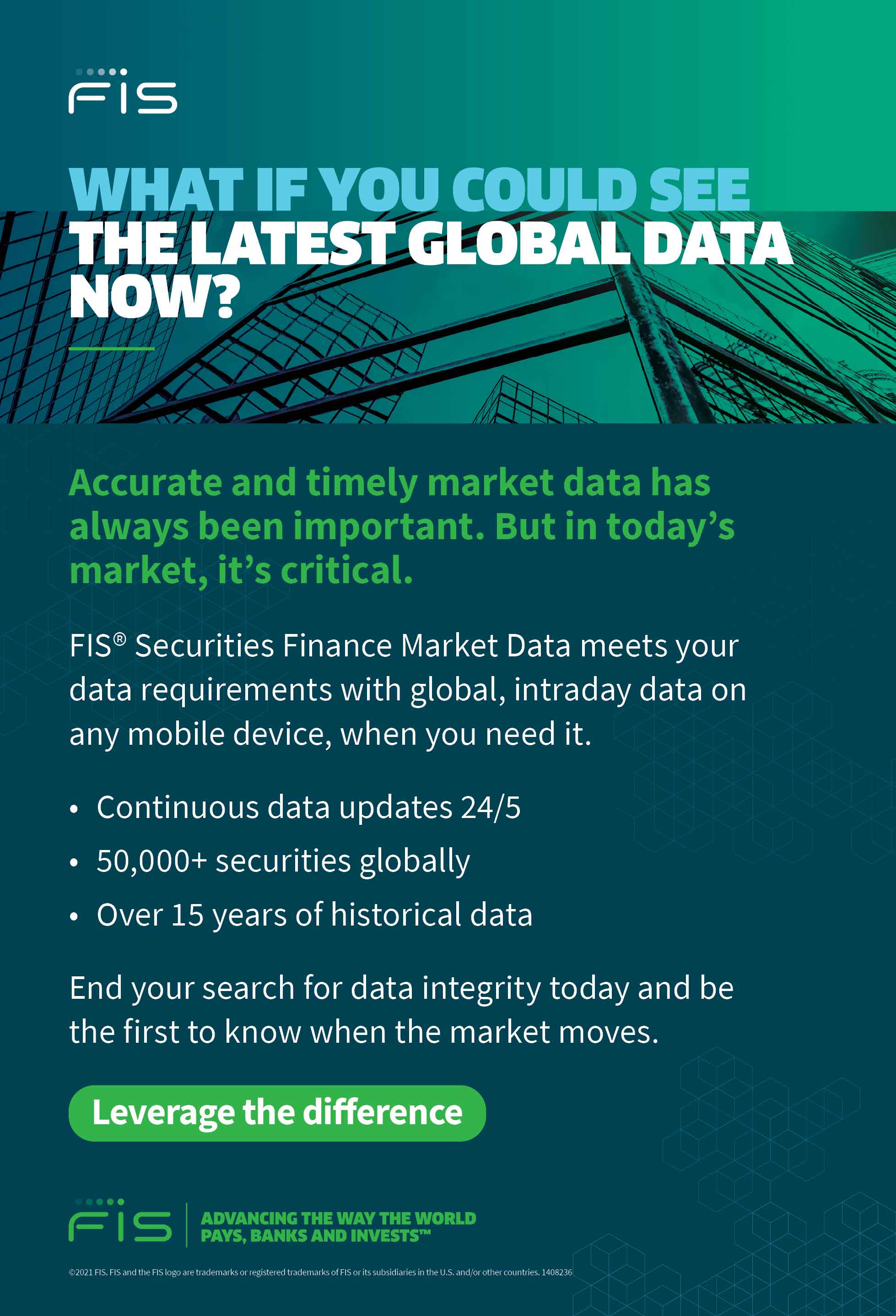Whether it is SFTR or SFDR, regulators must be clear about regulatory objectives, the data to be gathered and how they measure that data, says FIS’ David Lewis. A lack of certainty runs the risk that regulations will have the opposite effect to what was intended
It is fair to say that we live in a surveillance society. Cameras pop up in our neighbourhoods, shops and offices. Online, every move can be logged and counted to enhance our browsing experience. Even the phones in our pockets listen to our conversations to ensure the results of our next search are focused on what we think we need. There are many points of view regarding the benefits and disadvantages such surveillance can bring, with a common refrain from proponents telling us that if we have done nothing wrong then it should not be a concern. While that may be true, it does require consideration over the definition of what counts as “wrong”.
The securities finance and collateral management industry has needed to get used to greater levels of surveillance than it has previously been used to. The Securities Financing Transactions Regulation (SFTR) has been in place for over a year and this week, as we finalise this article, Securities Finance Times was holding its annual Technology Symposium, where the first panel examined the market experience of SFTR to date. The panellists reflected on their experiences as providers to the market through the journey of preparation, launch and ongoing changes that surround SFTR as the European implementation of the Financial Stability Board’s Transparency Directive. And what a journey it has been.
The Transparency Directive aims to shine a light into the arena of shadow banking, with its overall objective being to recognise liquidity strains in the marketplace. Identifying those strains will, hopefully, provide an early warning of systemic risk in market liquidity, prompting responses that would then avert the type of financial crisis seen back in 2007-8. This is a valuable outcome, but one that is dependent on measuring the right statistics in a timely and accurate fashion.
Family likeness
Next year sees more tweaks to the SFTR requirements, with the addition of new reconciliation fields, for example. Some would argue that there are higher priority items to address before making the matching process more difficult — and therein lies some of the weaknesses of SFTR. These weaknesses, namely around clarity of definition and certainty of process, have been present from the start and continue to hamper the regulation in meeting its full potential for effective reporting.
The newer sibling to SFTR is the Sustainable Finance Disclosure Regulation (SFDR) and the two should not be confused, despite having more than a passing family resemblance. Both are mandatory, for example, and both require the reporting of compliance against defined standards. SFDR is designed to harmonise standards across existing provisions on disclosures to investors regarding the sustainability credentials of the funds on offer. It is there to impose mandatory reporting on asset managers regarding how aligned their investment strategies are with key environmental, social and governance (ESG) factors.
These are all laudable objectives — as no doubt the 160-plus world leaders who recently flew to Glasgow from around the world to consider how to reduce pollution — would agree. However, the definition of compliance can be problematic. SFDR has an underlying principle of “do no significant harm” which introduces very subjective measurements. To pass this test, “the investment has no significant impact (presumably negative) on all other environmental or social objectives”.
The appliance of ESG principles is a very topical subject, inextricably in line with the rising global tide of climate and environmental awareness. So much so that very few investment providers are not rushing into the booming market in ESG-compliant funds, all seeking to invest clients’ money in the relatively small number of companies and securities that might pass as ESG-compliant. A previous SFT article highlighted the risks that such concentration poses in terms of asset price bubbles. Those risks for investors remain, and have potentially even grown, attracting the interests of short sellers seeking to benefit when prices realign. However, this analysis is more focused on the measures themselves and the impact on markets and investors of poorly defined requirements.
Greenwashing is a new term, recently entering the financial markets lexicon, and not one fund manager or institution would wish to see used to describe their activities. However, when the measurements lack certainty or clarity, definitions can be adjusted to suit. Few would argue with the overall objective of such regulations, but without clarity the impact is reduced and may even mislead investors into thinking they are doing the right thing regarding sustainable investing, when in practice they are not.
This leads to a fundamental difference between SFTR and SFDR; the latter is explicit in its stated purpose while SFTR might be interpreted as, ironically, a little less transparent. The purpose of SFDR is “to increase market transparency and direct capital towards more sustainable businesses”. Some would argue that, however beneficial to the world and its environment, it is not the regulators’ place to influence where an investor chooses to invest, but simply to ensure an orderly and fair marketplace. Similar concerns were raised when the European Central Bank (ECB) indicated that its corporate bond buying programme would favour issuers it considers to be more in line with its own ESG objectives, arguably improving the financial positions of corporations it favours over those it considers less attractive.
SFTR is intended to measure the market to avert financial crises. There are multiple spin-off benefits from the way the regulation has been implemented, such as driving improvements in data quality, reconciliations and reducing trade failures, although this has created significant additional costs and overheads of doing business. There is, though, an expectation that the data gathered through SFTR will lead to new regulations from the European Securities and Markets Authority (ESMA) that may seek to exert greater control over securities financing. It is there that the risks increase if the data is measured or interpreted incorrectly.
Whether it is SFTR or SFDR, regulators must be clear about the objectives of a given regulation, how they will define the data to be gathered and how they measure that data. The lack of clarity and certainty runs the risk that regulations will have the opposite effect to that intended. Few would argue that financial markets should not be regulated; we just need to be careful about who sets the standards, defines right and wrong and that the ultimate objective is clear.


